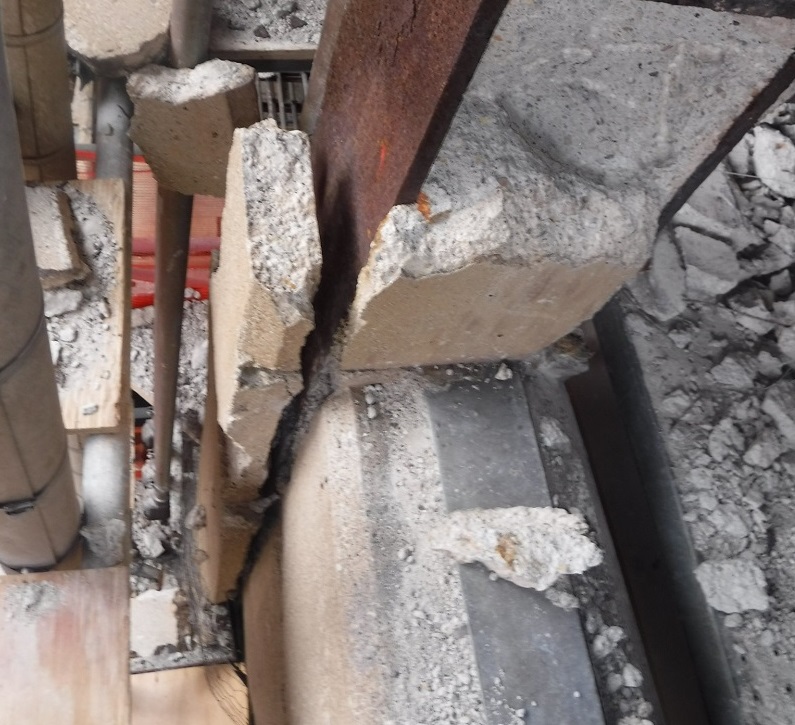The main purpose of passive fireproofing (FP) is to maintain structural stability and integrity of steel members for a defined period of time when exposed to a hydrocarbon pool fire. Reinforcement in concrete fireproofing plays a significant role in preventing the concrete fireproofing from cracking and spalling by providing mechanical anchorage to the structural steel. Cracking and spalling are two of the most common defects in concrete fireproofing that are observed during routine inspections, which can lead to damage from potential falling debris hazards above equipment and personnel. Not having proper anchorage and reinforcement for the fireproofing is typically the main cause of cracking and spalling, particularly in industrial facilities where members are exposed to the elements, impact damage, chemical attack, and vibrations from rotating equipment. Furthermore, in the event of a fire, properly designed and anchored reinforcement will limit explosive spalling and prevent large pieces of concrete debris from dislodging caused by impact from firewater.
Brindley Engineering Corporation (BE) provides in-depth concrete fireproofing assessments from a risk-based standpoint and prioritizes construction zones for repair to maximize risk reduction within operating units in industrial facilities. These repair work zones are selected by BE to address the critical sections of the unit based upon the likelihood and severity of the damaged concrete fireproofing.
BE provides in-depth concrete fireproofing assessments from a risk-based standpoint and prioritizes construction zones to maximize…
The Challenge
During the construction phase of a recent repair project, when demolition of existing FP was performed, it was discovered that a major section of concrete was disconnected from the flange of the structural steel column at approx. 30 feet above grade. It was further discovered during the demolition process that no mechanical anchorage or reinforcement was present around the steel member resulting in large pieces of concrete spalling. Without the presence of mechanical anchorage, fireproofing relies strictly on the strength of the chemical bond to the steel, making the FP more susceptible to cracking and spalling. This bond often fails when expansive forces from corrosion of the embedded steel are introduced. For this reason, it is critical that a positive anchorage is installed between the steel member and the FP reinforcement.
The fireproofing around the flanges of a steel member has greater risk of falling than the fireproofing around the web of the member due to thinner concrete cover around the flanges. Anchoring the Welded Wire Reinforcement (WWR) to the steel member with welded studs is a proven method for minimizing potential for fireproofing spalling from member flanges. For the column discussed above, anchor studs were welded to the flanges at regular intervals and WWR was tied to these anchor studs. See the images below for proper reinforcement and concrete fireproofing installation.
The Result





0 Comments